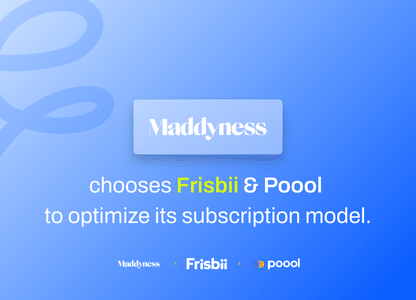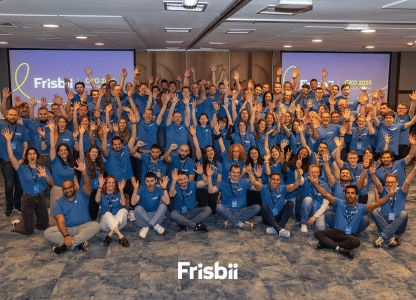Incentives can increase conversions and make loyal customers feel appreciated. But how do you use them efficiently? In this article, we take a closer look at discounts, their different types and best practices to make the best of them.
Discounts explained #
A discount is a price deduction of a product or product line. However, there are different ways to leverage discounts to increase sales and attract new and loyal customers. In the end, it’s all about using discounts as a way to motivate customers to purchase a product or engage with the brand who otherwise would have not done so.
Seasonal discounts #
Some discounts are seasonal, for example for product lines that are past their “prime” (e.g. Christmas chocolate after the holidays or mittens and scarves in summer). This is usually done to empty the warehouse for new collections and products and mostly covers retail products.
Introduction discounts #
A new product or brand might offer a discount to reward customers who try something new. Although free trials might also be an appropriate incentive in this case, a discount could be a good follow-up to a trial or a way to motivate customers to invest in a new feature, add-on or accessoire that might not lend itself to a free trial.
Loyalty discounts #
Although many companies focus their discounts on new customers, it always pays to thank long-term customers for their brand loyalty. They could receive a discount for additional products or their next purchase or they could get a month free for a subscription service.
Discounts can also be combined with loyalty programs by allowing customers to collect points with every purchase or specific actions (leaving a review, recommending the brand to a friend, etc.).
Signup discounts #
Email marketing is still one of the most important aspects of customer management, however, with the onslew of notifications, spam and marketing emails, many customers might hesitate to opt-in. That’s why many companies offfer a discount if customers sign up for the newsletter.
Early payment discounts #
Especially for events or pre-orders of new product lines (games, concert tickets, exclusive limited editions, etc.), early payment discounts can help a company to kick off a new product release and gage interest for long-term revenue planing.
Annual vs. monthly payment discounts #
Speaking of long-term revenue planing, especially for subscriptions, a long-term customer is preferred by most companies since they can rely on a steady baseline for an entire year. That’s why plenty of subscription services, especially in the Software-as-a-Service sector but also media subscriptions offer discounts if customers pay the annual sum (and usually forfeit more flexible cancellation options).
Volume/bulk discounts #
For products (moreso than services) that can be bought in higher volumes, a bulk discount usually helps convince customers to go for the higher number since the per-item-price will go down. This can also be applied to subscription boxes and products, especially when it comes to items that have a long shelf-life (so “hoarding” them does not create waste).
Personalized discounts #
A customer anniversary for loyal customers or a birthday discount does not only motivate another (or higher) purchase but also creates a more individual experience opposed to a seasonal or bulk discount. And even though it’s a very special experience for the customer, these discounts can be easily automated with marketing automation.
Discount Best Practices #
The right discount number & duration #
Subscription management can be complex, especially when you add discounts for specific plans, add-ons, etc. The right tool with functionalities that allow you to freely experiment with discounts, have a good overview and keep your accounting hassle-free, is crucial.
Tools that are not made for subscriptions can easily complicate things since discounts for one-time-purchases are quite different from discounts for subscription-based products or services that have a longer duration, are set for different subscription plans, etc.
Important features:
- Description
- Allocation / Order lines (does the discount apply to plans, add-ons, setup, etc.)
- Percentage or fixed price options
- Duration (unlimited, fixed period, fixed count)
Get the right tool #
Subscription management can be complex, especially when you add discounts for specific plans, add-ons, etc. The right tool with functionalities that allow you to freely experiment with discounts, have a good overview and keep your accounting hassle-free, is crucial.
Tools that are not made for subscriptions can easily complicate things since discounts for one-time-purchases are quite different from discounts for subscription-based products or services that have a longer duration, are set for different subscription plans, etc.
Important features:
- Description
- Allocation / Order lines (does the discount apply to plans, add-ons, setup, etc.)
- Percentage or fixed price options
- Duration (unlimited, fixed period, fixed count)
Percentage or money amount? Try the rule of 100 #
Percentage or the full amount? How should you communicate your discount, so the customers feel they save the most?
Well, in general, it’s recommended to pick whatever sounds “more” but as a rule of thumb:
If the amount is less than 100 €/$/etc., write the amount in % because low numbers translate into quite high percentages.
Example: 5% off of a 12€ bill sounds a lot better than 60 cent discount.
If the amount is more than 100 €/$/etc., the full amount should usually sound better because the amount feels higher.
Example: A 5% discount off of 2000€ might seem small compared to the full price but a 100€ discount off of 2000€ has a greater ring to it.
Know your customers #
A discount should ideally motivate customers who otherwise would not make a purchase or who would otherwise spend less. Otherwise, you potentially waste money on customers who happily would have paid the full amount (but not necessarily will buy more).
Customer analytics can be a great way to identify customers who need a discount to purchase in the first place or use the discount as a good excuse to spend a little more than they originally would have.
Do the math #
Make sure, that your discount does not turn into a losing business. This can be fickle.
Consider typical behavior from new and loyal customers. For example, if you have a higher rate for returns from new customers, a discount on the shipping fee might turn into higher costs for you, since your new customers will receive their money back but you have paid for shipping and increased the number of returns by offering a discount in the first place.
If you offer a discount for a subscription product or service, make sure that the churn rate after the discount period does not increase because you attracted users who are only willing to pay the discount price but who consider the actual price too expensive.
If your product and service includes a lot of sales and customer support, make sure that the discount does not overwhelm your sales and support team and that their time is included in the overall price, so you don’t loose money by overworking your sales and support teams without increasing your revenue accordingly.
Keep an eye on the competition #
A discount is one of the Top 3 reasons why customers will switch their subscription, so be aware of your competitor’s campaigns and pricing (as well as discounts). This is not to say that you have to match them – that’s how the feared “race to the bottom” starts, after all – but especially in highly competitive fields like SaaS, media subscriptions and retail/eCommerce, it’s always good to know what your competition is doing – also for your own gain.
Example:
A streaming service just removed a wide variety of movies and tv shows from their library. For the competition, this might be the perfect time to set up a discount for new subscribers combined with the message how big their library is.
Frisbii offers subscription management solutions that are flexible to your business model and allow for a wide range of different incentives and extras such as coupons, free trials, add-ons, one-time-fees, discounts, and more.
Set up a free demo with our experts, get to know our portfolio and find the right solution that grows with your business.



